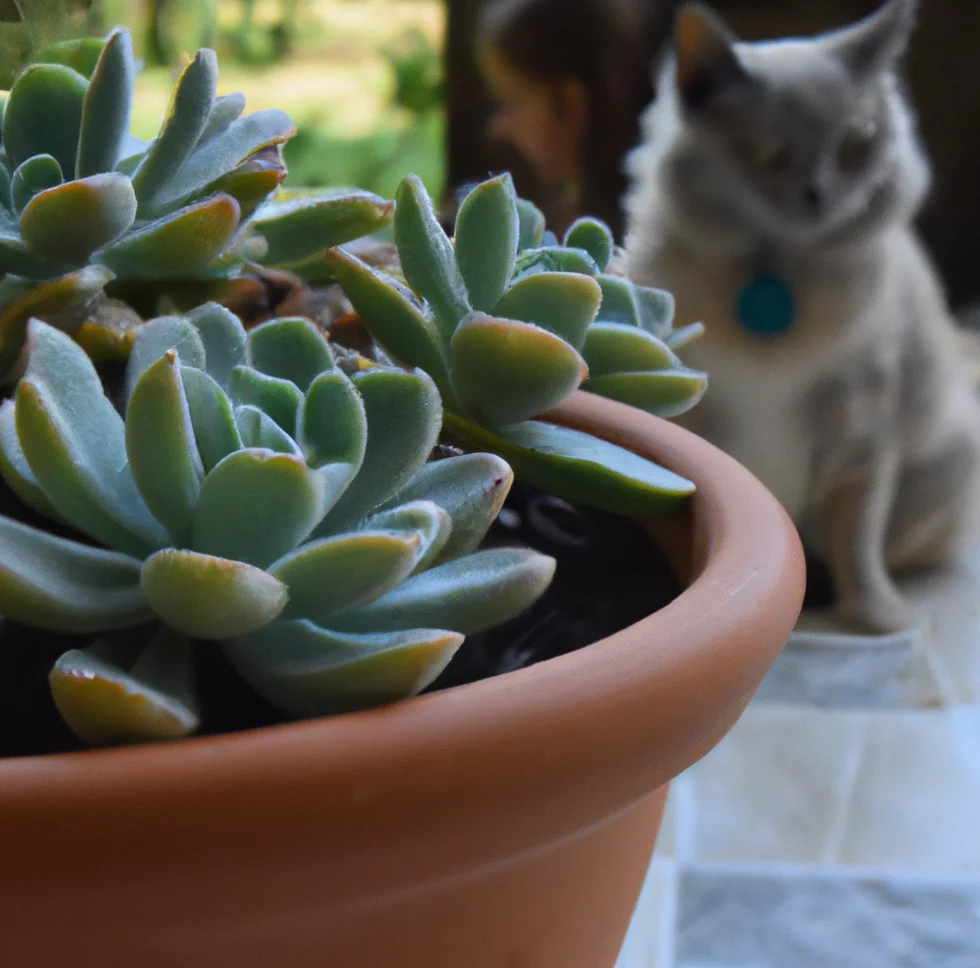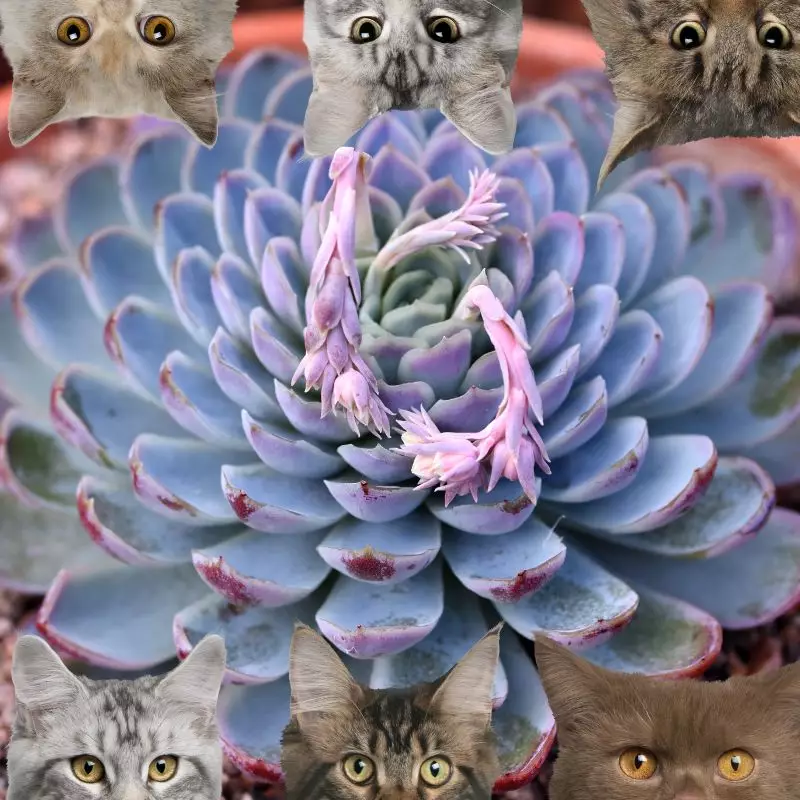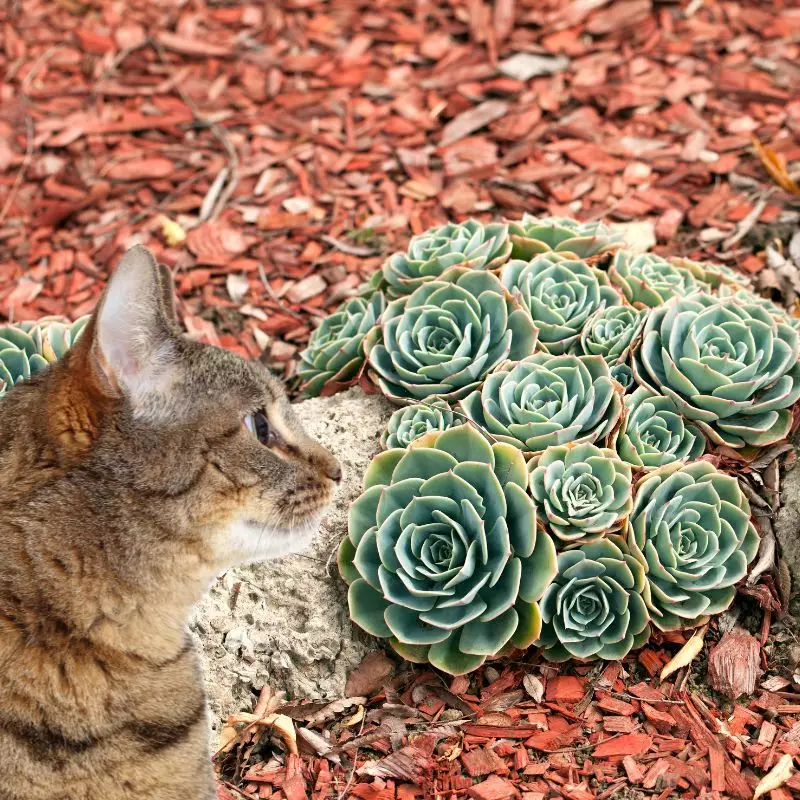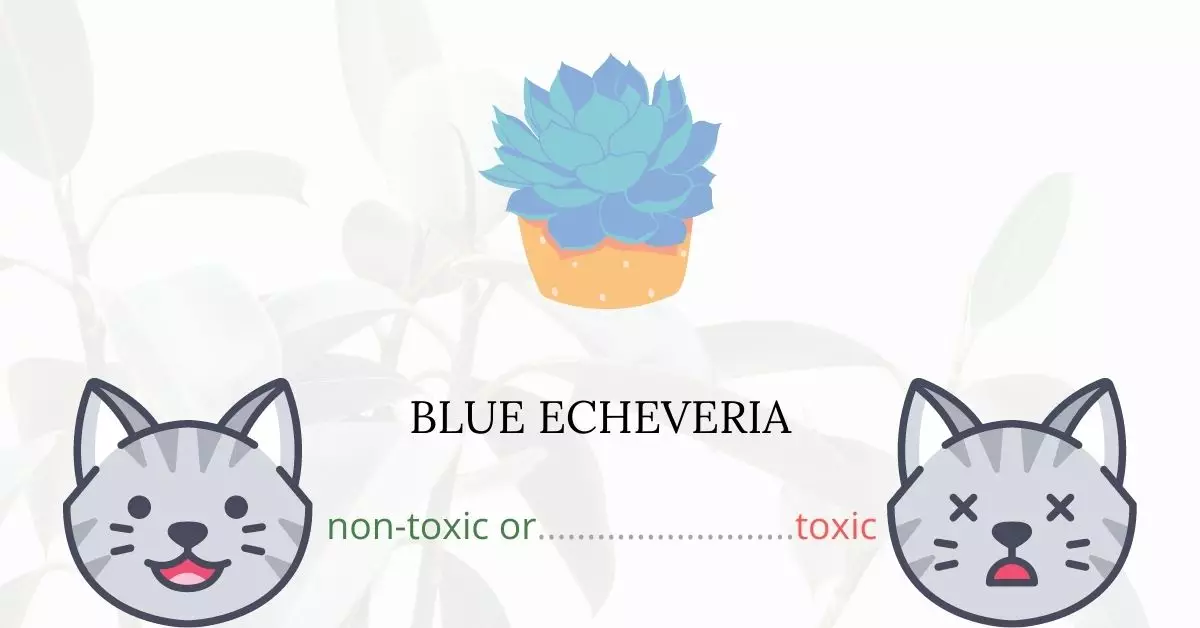Blue Echeveria poses no toxic threat to cats, making it a perfect choice for succulent aficionados who also share their homes with feline companions. This plant is explicitly listed as non-toxic to cats, dogs, and horses by the American Society for the Prevention of Cruelty to Animals (ASPCA). However, is being non-toxic synonymous with being safe for consumption by cats?
To guarantee the reliability and precision of the information provided in this article, we have collaborated with a team of seasoned Doctors of Veterinary Medicine (DVMs). Their extensive knowledge and experience have been invaluable in assessing the potential risks and impacts associated with various plants, particularly Blue Echeveria, on cats. Additionally, to further substantiate our findings, we have consulted high-authority resources such as the ASPCA and PetMD to ensure the delivery of the most accurate and up-to-date information available on every plant discussed.
Can Cats Eat Blue Echeveria?

A bite of blue echeveria will not hurt your feline companion. The said plant is generally safe and does not possess toxic particles that can harm your cat. But, eating a large quantity of blue echeveria may lead to digestive problems in cats.
Your cat is a carnivore and eating plants is not good for them. Their bodies are not ready to process plant matter as they do not have the required enzymes to do it. It is recommended to keep away your felines from your succulents including blue echeveria.
Check out some tips on how to keep your cats away from your house plants below.
What is Blue Echeveria?

Echeveria is a genus of rose-shaped succulents native to Central America’s semi-desert areas. Echeverias are a popular succulent due to their attractive rosettes and magnificent water-storing leaves. Echeveria succulents are available in a range of vibrant hues and typically produce lovely blooms. They are extremely easy to maintain, grow fast, and can withstand drought.
Echeveria glauca is the scientific name of blue echeverria. It is an echeveria cultivar from the Crassulaceae plant family. Other names of blue echeveria include Maroon Chenille Plant, Painted Lady, Copper Rose, Wax Rosette, and Plush Plant. Blue Echeveria variations occur in a wide range of sizes and growth behaviors. The colors of these plants range from a normal greenish-blue to deep indigo. One of the blue echeveria’s cultivars, ‘Compton Carousel’, has received the Royal Horticultural Society’s Award of Garden Merit.
Blue echeveria is a slow-growing plant that grows to be around 6 inches tall.
The thick and succulent leaves have a glossy look with a slightly wavy edge. The rosette develops at the base of a tall stem with tiny side branches at the top. These can be trimmed off as the plant ages to keep it compact.
Keeping Cats Away From Blue Echeveria

Cats are naturally interested and inquisitive. They like touching and interacting with objects that pique their curiosity, including plants. It is inevitable that their curiosity will entail tasting these plants.
To protect your cats from coming close to your blue echeveria, place it in a room that your cat cannot enter. Experts also recommend using aluminum foil. Aluminum foil’s crinkly texture and scent are unpleasant for cats. Wrap an aluminum foil sheet over your potted plants or place it in your garden near your plants. This will keep your cat from getting too close to your plants.
Plants to Avoid For Your Cats
If you are a cat owner and unsure if the plants growing in your yard are harmful to your cats, check out this list of toxic plants for cats. You can also check our list of non-toxic plants for cats.





